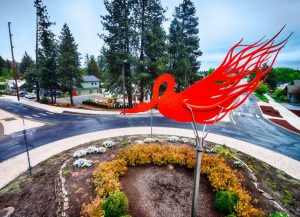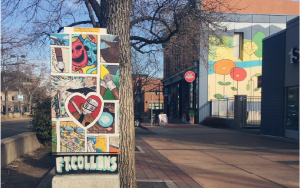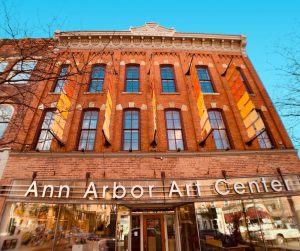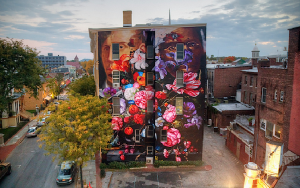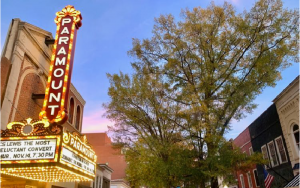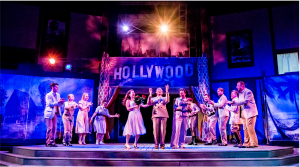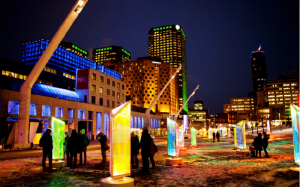
THE 30 MOST
CREATIVE
SMALL CITIES
CVSuite and its team of editors, designers, and data analysts have come together to introduce The Creative Vitality List, a series of data-driven profiles that chronicle the economic impact of arts and culture on the local economy. We begin this list with The Top 30 Creative Small Cities, which looks beyond well-known creative hotspots like New York, Los Angeles, Nashville, and Austin to showcase the vitality of smaller, perhaps lesser-known, creative communities.
After identifying 392 MSAs (Metropolitan Statistical Areas) with populations under 500,000, our creative economy experts developed a method of analyzing creative occupation and industry earnings, nonprofit arts and culture revenue, and the population of the MSA. Based on these factors, each MSA is given a value that is benchmarked against the United States. This value is the MSA’s Creative Vitality Index.
In addition to featuring well-known creative communities like Santa Fe, New Mexico, the list also includes some MSAs that may surprise you, such as Medford, Oregon; Kingston, New York; and Iowa City, Iowa. While compiling this list of small cities, we discovered a wide array of creative industries that are thriving in these communities, as well as impressive concentrations of artistic and cultural nonprofits fueling the local economy through the support of their community members.
We are excited to celebrate the creative vitality of the communities featured in this list and, hopefully, inspire you to share stories of how the arts and culture sector enriches the economic and creative health of your community.
HOW DO YOU
MEASURE
CREATIVE
VITALITY?
Creative vitality encompasses more than just one group of industries, occupations, or set of nonprofit organizations. Creative Vitality Suite knows this, which is why it created the Creative Vitality Index (CVI). The CVI allows users to measure important economic signals that correlate to a region’s overall creative economic health and compares them as a ratio to that of the United States. (I.e. A CVI value of 1.5 means the creative vitality of a region is 1.5 times more concentrated than that of the United states). The CVI considers not just creative industries, occupations, or arts and cultural nonprofits alone, it combines them all—while also considering the region’s density.
In calculating a region’s CVI value, it’s important to consider the businesses that make up the area’s creative economy. However, it’s equally important to consider the workers that comprise those businesses. The CVI consists of 36 occupations organized by Standard Occupational Classification (SOC) codes that utilize skills highly correlated with creativity. When measuring an area’s creative economy, it is important to consider the number of jobs that are added to the workforce by creative workers and the demographic make-up of the creative economy in the region. Including this information helps the data paint an accurate picture of the area’s creative vitality with respect to occupations.
The presence and productivity of certain industries also indicate creative vitality within a region. The CVI includes data from 9 industries that are included in the North American Industry Classification System (NAICS), such as independent artists, writers, and performers and art dealers.
The creative vitality of an area isn’t just measured by monetary profit. The financial resources that a region has set aside to uplift arts and culture also play a role. That’s why the CVI includes revenues from 45 carefully selected types of organizations using the National Taxonomy of Exempt Entities Classification (NTEE) codes that define arts and cultural nonprofits. Those nonprofit revenues make up 20% of the CVI’s measure of the creative economy.
An area’s creative vitality cannot be measured by a single factor. Because less dense regions are also creative hotspots, the CVI looks at combinations of creative factors per person, known as a per capita measurement. By assessing creative activity in this way, the CVI answers the question: How much access does a community member have to creative opportunities?
CVI VALUE: 0.93
CREATIVE JOBS: 5,758
INDUSTRY EARNINGS: $105,711,774
NONPROFIT REVENUES: $48,792,346
POPULATION: 372,877
CVI VALUE: 0.94
CREATIVE JOBS: 5,906
INDUSTRY EARNINGS: $48,375,834
NONPROFIT REVENUES: $17,491,827
POPULATION: 283,370
CVI VALUE: 0.95
CREATIVE JOBS: 2,477
INDUSTRY EARNINGS: $20,362,660
NONPROFIT REVENUES: $15,863,417
POPULATION: 146,864
CVI VALUE: 0.96
CREATIVE JOBS: 2,760
INDUSTRY EARNINGS: $15,985,857
NONPROFIT REVENUES: $5,299,957
POPULATION: 188,207
CVI VALUE: 0.96
CREATIVE JOBS: 2,846
INDUSTRY EARNINGS: $27,142,768
NONPROFIT REVENUES: $17,963,092
POPULATION: 140,973
CVI VALUE: 0.96
CREATIVE JOBS: 9,213
INDUSTRY EARNINGS: $120,885,723
NONPROFIT REVENUES: $29,589,359
POPULATION: 456,143
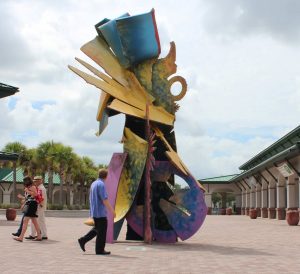
Image by Albert Paley
Naples, Florida is ranked number 30 on the Top 30 Creative Small Cities List with a CVI value of .93. The value was calculated using the Naples, Immokalee, and Marco Island MSA, which has a population of 372,887. Naples employed 5,220 workers within the creative economy and generated $87.7 million in creative industry earnings. The arts and cultural nonprofit organizations in Naples generated $48.8 million in revenues.
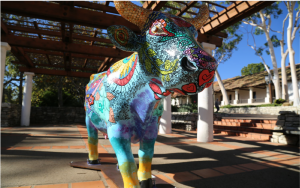
Image by Dave’s Travel Corner
San Luis Obispo, California is ranked number 29 on the Top 30 Creative Small Cities List with a CVI value of .94. The value was calculated using the San Luis Obispo, Paso Robles, and Arroyo Grande MSA. Last year, San Luis Obispo employed 5,504 workers within the creative economy and generated $49.5 million in earnings. The nonprofit organizations in the area generated $17.5 million in revenue.
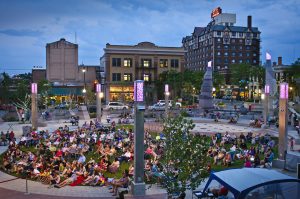
Image by Black Hills and Bad Lands
Rapid City, South Dakota is ranked number 28 on the Top 30 Creative Small Cities List with a CVI value of .95 and a population of 74,421. The city employs 2,273 workers within the creative economy. Rapid City’s creative industries generated $14 million in earnings and its creative nonprofit organizations generated $15.8 million in revenue last year.

Image by Illinois State University
Bloomington, Illinois is ranked number 27 on the Top 30 Creative Small Cities List with a CVI value of .96. Bloomington has a population of 85,701, and photographers, public relations specialists, musicians and singers, and writers and authors had the city’s highest concentration of creative jobs. Bloomington’s creative industries generated $24.2 million in earnings, while its nonprofit organizations generated $5.3 million in revenue.
Napa, California is ranked number 26 on the Top 30 Creative Small Cities List with a CVI value of .96. With a population of 79,774, Napa employed 2,508 workers within the creative economy, generating a total of $33.5 million in earnings. The city’s landscape architects and public relations and fundraising managers had location quotients above 1.5, making these occupations highly concentrated in Napa compared to similar regions.
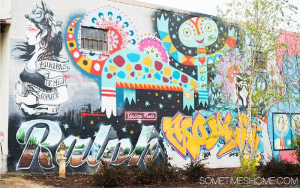
Image by Dan and Mikkel via Sometimes Home
Asheville, North Carolina is ranked number 25 on the Top 30 Creative Small Cities List and has a CVI value of .96, a value that is close to the national average. Asheville has a population of 91,902 people and employs 8,819 workers within the creative economy. The number of graphic design jobs in the city increased by 38 over the last year. Overall, the creative industries generated $75.9 million in earnings, with revenue from musical groups and artists growing by 9% in one year. Of the arts and cultural nonprofit organizations in the area, Asheville’s performing arts schools brought in the most revenue, $3 million last year.
CVI VALUE: 1.00
CREATIVE JOBS: 1,297
INDUSTRY EARNINGS: $16,465,746
NONPROFIT REVENUES: $20,996,316
POPULATION: 102,335
CVI VALUE: 1.01
CREATIVE JOBS: 4,427
INDUSTRY EARNINGS: $25,725,105
NONPROFIT REVENUES: $11,187,180
POPULATION: 186,877
CVI VALUE: 1.08
CREATIVE JOBS: 3,868
INDUSTRY EARNINGS: $57,040,774
NONPROFIT REVENUES: $43,703,758
POPULATION: 269,033
CVI VALUE: 1.08
CREATIVE JOBS: 8,418
INDUSTRY EARNINGS: $71,704,630
NONPROFIT REVENUES: $12,570,345
POPULATION: 343,938
CVI VALUE: 1.13
CREATIVE JOBS: 2,343
INDUSTRY EARNINGS: $5,590,566
NONPROFIT REVENUES: $6,288,041
POPULATION: 132,149
CVI VALUE: 1.17
CREATIVE JOBS: 6,860
INDUSTRY EARNINGS: $23,742,213
NONPROFIT REVENUES: $23,742,213
POPULATION: 275,882
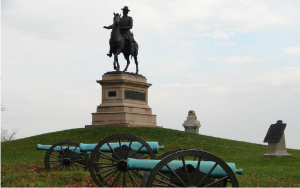
Image by Rachel Cooper via Tripsavvy
Gettysburg, Pennsylvania is ranked number 24 on the Top 30 Creative Small Cities List with a CVI value of 1.0 and a population of 7,000. Gettysburg’s creative industries employed 1,249 workers, 16.3% of the city’s workforce, putting Gettysburg in line with the CVI average. The city’s creative industries generated $11.4 million in revenue, while its arts and cultural nonprofit organizations earned nearly $21 million.
Bend, Oregon is ranked number 23 on the Top 30 Creative Small Cities List with a CVI value of 1.01. The value was calculated using the Bend and Redmond MSA, which employed 4,195 workers within the creative economy. Graphic designers were the fastest growing creative occupation in the region. This MSA’s creative industries generated $35.5 million in earnings into the region’s economy, a number that has increased 2.3% since last year. The creative and cultural nonprofit organizations brought in a collective $11.2 million, with natural history and natural science museums generating the most revenue, $5.8 million.

Image by Tim Cook via The Day
Norwich, Connecticut is ranked number 22 on the Top 30 Creative Small Cities List with a CVI value of 1.08. The value was calculated using the Norwich and New London MSA. The region’s population is 266,784 and 3,863 workers were employed within the creative economy, generating $44.1 million in earnings. The city’s artistic and cultural nonprofit organizations brought $43.7 in revenue into the local economy.
Ft. Collins, Colorado is ranked number 21 on the Top 30 Creative Small Cities List with a CVI value of 1.08. Independent artists, writers, and performers in Ft. Collins generated $45.8 million in earnings for the city. Theater companies, dinner theaters, and art dealers contributed $70 million in earnings to the area’s overall economy. Over the last 3 years, the city’s creative economy experienced a 32% growth in the number of musical instrument repairers and tuners. Ft. Collins’ arts and cultural nonprofit organizations brought in over $12.5 million in revenue, most of which was generated by arts, humanities, and cultural agencies.
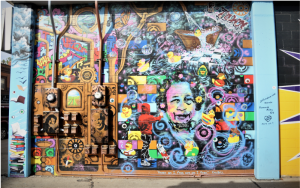
Image by Stacy Brooks via Tangled Up In Food
Bismarck, North Dakota is ranked at number 20 on the Top 30 Creative Small Cities List with a CVI value of 1.13. With a population of 70,000, Bismark employed 2,282 workers within the creative economy. The number of art directors in Bismarck grew by 32% over the last 3 years. In the last year, the number of fine artists in the city grew by 20.6%

Image by Blair Stenvick via Santa Cruz Life
Santa Cruz, California comes in at number 19 on the Creative Small Cities List with a CVI value of 1.17, which was calculated using the Santa Cruz-Watsonville MSA. Santa Cruz is home to roughly 120,000 people and employed 6,152 workers within the creative economy. Photographers represented about 23% of the total number of this area’s creative jobs. The creative economy of Santa Cruz experienced an 18.5% growth in earnings, generating $75 million for this MSA last year. The region’s printing and publishing industry brought in $2 million and theaters generated $1.3 million in revenue for Santa Cruz’s creative economy.
CVI VALUE: 1.18
CREATIVE JOBS: 7,712
INDUSTRY EARNINGS: $35,124,601
NONPROFIT REVENUES: $26,208,823
POPULATION: 477,609
CVI VALUE: 1.08
CREATIVE JOBS: 3,727
INDUSTRY EARNINGS: $10,650,442
NONPROFIT REVENUES: $13,182,577
POPULATION: 178,255
CVI VALUE: 1.08
CREATIVE JOBS: 9,274
INDUSTRY EARNINGS: $54,794,151
NONPROFIT REVENUES: $53,880,494
POPULATION: 367,549
CVI VALUE: 1.23
CREATIVE JOBS: 4,462
INDUSTRY EARNINGS: $76,974,389
NONPROFIT REVENUES: $12,774,790
POPULATION: 179,415
CVI VALUE: 1.33
CREATIVE JOBS: 4,004
INDUSTRY EARNINGS: $49,750,887
NONPROFIT REVENUES: $23,147,363
POPULATION: 166,339
CVI VALUE: 1.33
CREATIVE JOBS: 6,515
INDUSTRY EARNINGS: $70,107,772
NONPROFIT REVENUES: $46,945,905
POPULATION: 233,788
East Lansing, Michigan is ranked number 18 on the Top 30 Creative Small Cities List with a CVI Value of 1.18. East Lansing’s CVI value was calculated using the Lansing-East Lansing MSA, which has a population of 114,297. The communities in this MSA employed 7,631 workers within creative occupations, and experienced a 5% growth in the creative economy as a whole over the last 3 years. East Lansing generated $48 million in creative economy earnings and $26.2 million in nonprofit revenue.
Columbia, Missouri is ranked number 17 on the Top 30 Creative Small Cities List with a CVI value of 1.23. Of Columbia’s total population of 121,717, 3,505 workers were employed within creative occupations last year. Columbia’s performing arts industry experienced significant growth in the number of producers and directors and an increase in cultural events, such as the True/False documentary film festival. The town’s creative industries generated $24 million in earnings and its nearly 40 nonprofit organizations generated a total revenue of $13 million.
Ann Arbor is ranked number 16 on the list of the Top 30 Creative Cities with a CVI value of 1.23. With a total of 9,361 creative economy jobs, nearly 8% of the city’s population was employed within the creative economy. The number of jobs for writers and authors increased by 90 in the last year, the most of any creative occupation in the city. Ann Arbor’s creative industries generated $58 million in revenue last year, and the city’s book store sales increased by 7.3%.
Kingston, New York Is number 15 on the Top 30 Creative Small Cities list. This town of 23,169 has a CVI value of 1.23. With a total of 3,919 creative occupations, 14.3% of Kingston’s workforce was employed within the creative economy. The town’s creative industries generated $77 million in revenue in 2018.

Image by Maui Office of Economic Development
Kahului is number 14 on the Top 30 Creative Small Cities list. Kahului’s CVI value of 1.33 was calculated using the Kahului-Wailuku-Lahaina MSA. There was an increase of 23.9% in the number of choreographers in this area since 2016. The region is home to a total of 16 cultural and ethnic awareness nonprofit organizations, which support the local economy by generating $5.7 million in revenue. The number of creative industries in this MSA has grown by 14% over the last five years, generating $60.5 million in revenue.
Charlottesville, Virginia is number 13 on the Top 30 Creative Small Cities List with a CVI value of 1.33. There are 6,321 total creative jobs in Charlottesville. The city’s creative industries generated a total of $58.1 million, of which independent artists, writers and performers contributed $45.5 million. Arts and culture nonprofit organizations brought $47.9 million in revenue into the economy.
CVI VAULE: 1.33
CREATIVE JOBS: 9,755
INDUSTRY EARNINGS: $143,728,261
NONPROFIT REVENUES: $97,041,071
POPULATION: 448,140
CVI VALUE: 1.37
CREATIVE JOBS: 7,531
INDUSTRY EARNINGS: $37,879,897
NONPROFIT REVENUES: $33,152,779
POPULATION: 409,705
CVI VALUE: 1.38
CREATIVE JOBS: 3,060
INDUSTRY EARNINGS: $22,809,179
NONPROFIT REVENUES: $14,591,143
POPULATION: 117,434
CVI VALUE: 1.40
CREATIVE JOBS: 5,644
INDUSTRY EARNINGS: $56,503,677
NONPROFIT REVENUES: $50,233,713
POPULATION: 213,436
CVI VALUE: 1.43
CREATIVE JOBS: 6,054
INDUSTRY EARNINGS: $42,467,687
NONPROFIT REVENUES: $45,695,726
POPULATION: 218,388
CVI VALUE: 1.55
CREATIVE JOBS: 9,025
INDUSTRY EARNINGS: $58,368,933
NONPROFIT REVENUES: $63,590,414
POPULATION: 374,730
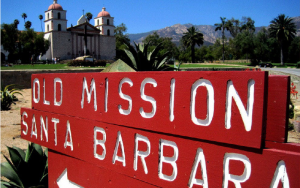
Image by USA Today
Santa Barbara ranks number 12 on the Top 30 Creative Small Cities List. Calculated using the Santa Barbara-Santa Maria MSA, this region has a CVI value of 1.33. Independent artists, writers, and performers in Santa Barbara generated $99 million in earnings for the city’s economy. Performing arts venues generated $4.3 million in revenue, more than any other type of nonprofit organization in the region. Santa Barbara experienced a 25% growth in the number of art directors.
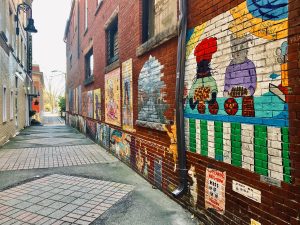
Image by Pat Grossith
Manchester, New Hampshire ranks number 11 on the Top 30 Creative Small Cities List. Manchester has a population of 88,000 and a CVI value of 1.37, a value that was calculated using the Manchester-Nashua MSA. The town’s creative industries brought nearly $93 million in revenue into the area’s economy with independent artists, writers, and performers being the industry employing the most workers. Manchester is also home to 7,000 jobs in creative occupations, 33.1% of which are film and video editors. Manchester’s creative workforce makes up a larger proportion of its population when compared to the national average, which is one reason it comes in so high on the list.

Image by Matt Babcock
With $26 million in creative industry earnings and an impressive CVI value of 1.38, Missoula, Montana has a strong and active creative community. Missoula’s population of 70,000 is just as likely to attend the symphony or theater as it is to engage in outdoor recreation.
By location quotient, Missoula has a significantly higher concentration of independent artists, writers, and performers, theater companies, dinner theaters, art dealers, and bookstores than the rest of the United States. Sixty-three percent of the town’s $672 million in arts-related revenues come from its theaters. Cultural organizations generate a sizable 8.5% of the town’s nonprofit revenue. Missoula’s CVI value has risen over the last three years due to a 35% increase in the number of art directors, film, and video editors in the area.
Tom Benson is the executive director of Arts Missoula, the town’s local arts agency. Benson notes the numerous film, literary, cultural, theater, dance, and music festivals that take place in Missoula throughout the year, along with monthly gallery walks encompassing 12 private downtown galleries. Benson notes that Missoula is home to the University of Montana, which serves as a strong partner in many of the community’s cultural activities and helps attract and retain the city’s numerous visual artists, writers, and musicians.
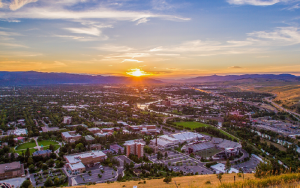
Image by Destination Missoula
Missoula is home to more than 60 arts nonprofits, including the nationally recognized Missoula Children’s Theater and some impressive museums, including the Historical Museum at Fort Missoula, the Rocky Mountain Museum of Military History, the Montana Museum of Art & Culture, and the Missoula Art Museum. The performing arts also thrive in Missoula, thanks in part to Missoula Symphony Orchestra, Chorale, String Orchestra of the Rockies, Montana Repertory Theatre, Missoula Community Theatre, and more. Regular art classes are offered at the Zootown Arts Community Center, the Downtown Dance Collective, and the Clay Studio of Missoula. Benson reports that Missoula’s entertainment industry has grown dramatically, noting that performers like the Rolling Stones, Paul McCartney, and Pearl Jam had all played at the University of Montana’s Washington-Grizzly Stadium in recent years. Two distinct 4,000+ outdoor amphitheaters have also opened recently in Missoula, with full summer schedules featuring national acts. Renovated in 2015, the historic Wilma Theatre also presents national touring acts throughout the year.
Missoula residents regularly come together to enjoy the wide array of activities that make the culture and economy of this city more vibrant. CVSuite data shows us that creative communities can make a big impact—even in cities with small populations.

Image by Jack Conway
Barnstable, Massachusetts comprising 7 villages and encompassing 76 square miles between Nantucket Sound and Cape Cod Bay, ranks number 9 on the Top 30 Creative Small Cities List with a CVI value of 1.4. The demand for art directors in this area has grown by 34.1% in the last 3 years, adding 60 new jobs to the creative economy. The area’s creative industries generated $60.5 million in earnings, with independent artists accounting for over $40 million of those earnings.

Image by Lonija Sāgena
Burlington, Vermont ranks number 8 on the Top 30 Creative Small Cities List. Burlington has a CVI value of 1.43, a value that was calculated using the Burlington-South Burlington metropolitan statistical area (MSA). Writers and authors experienced the highest level of job growth within this region’s creative economy over the last 3 years, resulting in Burlington’s more than 600 writers and authors. Creative industries generated $43.7 million in revenue for the area over the last year. Musical groups and musical artists experienced the region’s highest growth in earnings, 15.3%. Community-supported fairs and festivals generated the most revenue of the area’s arts and cultural nonprofit organizations, bringing $4.3 million into Burlington’s creative economy.
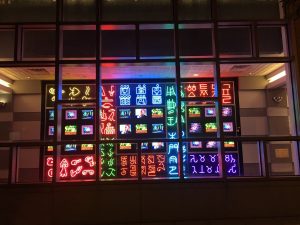
Image by Nam June Paik
Trenton, New Jersey is ranked number 7 on the Top 30 Creative Small Cities List and has a CVI value of 1.55. The city’s arts and cultural nonprofit organizations generated $63.6 million in revenue in the last year. In addition to the revenue generated by its nonprofit organizations, Trenton’s for-profit creative occupations also contributed to its strong CVI value. The city experienced a 7% increase in job growth for architects, and Trenton’s dance companies had an increase of 16.8% in earnings per job. Independent artists, writers, and performers generated a total of $32.1 million in earnings, and employed the city’s highest number of creative workers, 1,777.
CVI VALUE: 1.61
CREATIVE JOBS: 3,377
INDUSTRY EARNINGS: $15,237,392
NONPROFIT REVENUES: $12,128,357
POPULATION: 171,468
CVI VALUE: 1.67
CREATIVE JOBS: 3,033
INDUSTRY EARNINGS: $31,404,702
INDUSTRY JOBS: $12,652,465
POPULATION: 104,712
CVI VALUE: 1.68
CREATIVE JOBS: 4,528
INDUSTRY EARNINGS: $53,928,263
NONPROFIT REVENUES: $67,004,280
POPULATION: 217,482
CVI VALUE: 1.89
CREATIVE JOBS: 13,206
INDUSTRY EARNINGS: $139,926,491
INDUSTRY JOBS: $51,763,977
POPULATION: 322,471
CVI VALUE: 2.35
CREATIVE JOBS: 3,291
INDUSTRY EARNINGS: $61,696,316
NONPROFIT REVENUES: $93,955,000
POPULATION: 126,315
CVI VALUE: 3.07
CREATIVE JOBS: 6,138
INDUSTRY EARNINGS: $102,798,267
NONPROFIT REVENUES: $91,861,593
POPULATION: 148,752
It comes as no surprise that Iowa City lands at an impressive number 6 on the Top 30 Creative Cities list. After all, it wasn’t labeled “the greatest small city for the arts” by accident.
Opportunities for creative initiatives in the city are abundant, notes Nick Pfeiffer, vice president of marketing and communications of Think Iowa City. World-class acts make Hancher Auditorium at the University of Iowa a destination. The Englert Theater hosts live music, dance, and comedic performances. There are six local theater companies located in the city, and the Shakespeare Festival takes place every year on an outdoor stage by the Iowa River. Painted murals adorn the alleys in Downtown Iowa City, and sculptures inspired by novels written by authors who spent time at the renowned Iowa Writers’ Workshop make for an entertaining walk by the Iowa River in Coralville. Film is center stage at the boutique movie theater FilmScene, which offers one of the best film viewing experiences in the country.
Measuring an area’s creative economy requires us to look at four core measures: population, creative occupations, for-profit creative industry earnings, and nonprofit creative and cultural earnings. For a town its size, the concentration of Iowa City’s creative industries is 22% higher than the national average. There are 1,256 creative workers employed within the city, generating $25.5 million in creative industry earnings. Iowa City’s creative economy attracts a large population of early- to mid-career creative workers (people aged 25-34 years), which currently makes up 14.6% of the town’s population.
Iowa City’s independent artists, writers, and performers generated earnings of over $10.2 million. In 2018, $2.7 million of the city’s earnings were attributed to printing and publishing, performing arts centers, and performing arts schools.
As the first city in the United States to hold the UNESCO Literature City designation, Iowa City joins the ranks of cities like Barcelona, Québec, and Edinburgh, and attracts a high number of performers, writers, printers, and publishers. UNESCO describes its Creative Cities program as an initiative that encourages: “…placing creativity and cultural industries at the heart of [the cities’] development plans at the local level and cooperating actively at the international level.”
Iowa City offers residents and visitors plenty of arts and cultural opportunities to enjoy. In addition to the contributions these opportunities make to the community’s quality of life, their economic benefits are undeniable. And now, thanks to the CVSuite, those benefits can be measured using trusted, high-quality data.
Ithaca, New York is ranked number 5 on the Top 30 Creative Small Cities List. The city’s creative industries generated $37 million in revenue and contributed to its high CVI value of 1.68. The highest number of creative workers in Ithaca were independent artists, writers, and performers, which generated $26.7 million in income. The number of art dealers in the city increased by 17.3% in the last year, and the number of choreographers in the city has grown by 23.9% since 2016.

Image by Yulia Avgustinovich
Medford, Oregon is ranked number 4 on the Top 30 Creative Small Cities list with a population of 217,482 and CVI Value of 1.68. Based on the location quotient, bookstores, independent artists, writers, performers, and theater and dinner theater companies are all important industries to Medford, OR. The region has 8.21 times the number of theater and dinner theater companies than the national average. The creative industries generated $60 million in earnings and contributed 4,076 creative occupations. The number of creative occupations in the region grew by 5% in the last year. Nonprofits played an important role in the creative economy as well. Medford is home to 53 different nonprofit organizations that generated $35 million dollars in revenue. Theatre companies generated the most revenue of all nonprofits, bringing in $23 million dollars.

Image by Studio Arts Boulder and Adam Palazzari
Boulder, Colorado is ranked number 3 on the Top 30 Creative Small Cities List. The city’s CVI value is 1.89, nearly double the US average. In 2017, Boulder’s creative industries generated $117.2 million in revenue for the city. Boulder is home to more than twice as many art dealers as the national average. Dance companies were the city’s fastest growing creative industry, generating close to $1.8 million in earnings. Nearly 12,651 creative workers were employed in this city. Creative jobs were 63% more concentrated in this city than in other similarly sized regions, a number that is projected to grow 10% in the next five years. There were more graphic designers employed within Boulder’s creative economy than any other occupation, followed by public relations specialists and architects. Last year, Boulder’s creative economy generated approximately $52 million in nonprofit revenues into the city’s creative economy.
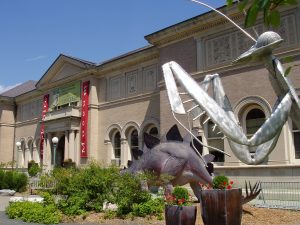
Image by Berkshire Museum
Pittsfield, Massachusetts is ranked number 2 on the Top 30 Creative Small Cities List. Pittsfield MSA has a population just over 126,000 and a CVI value of 2.35. The region employed 3,135 workers within the creative economy, which generated $40.8 million in total earnings. Art directors experienced a 35.8% job growth, while photographers had the highest number of creative jobs, constituting 12.6% of the creative workforce. Arts and cultural nonprofits in the region generated $93.9 million in total revenue. The amount of revenue generated by Pittsfield’s arts and culture nonprofits has a lot to do with its placement on the CVI list, generating over $700 per person compared to the national average of only $85 per person. Theaters generated $8.7 million in program revenue, the most out of this region’s 97 total cultural nonprofit organizations.
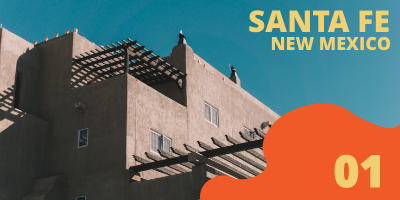
Image by Ian Dooley
Santa Fe, New Mexico ranks number 1 on our list of the most creatively vital cities with populations under 500,000. With a population of 83,776 and creative economy earnings of $102 million a year, the creative vitality of this small city rivals the creative economies of heavy hitters like New York and Los Angeles.
Santa Fe is home to a constant buzz of artistic energy, with 250+ art galleries, several major art museums and a large population of full-time artists-in-residence. The Georgia O’Keeffe Museum, New Mexico Museum of Art, Museum of International Folk Art, SITE Santa Fe, Museum of Indian Art & Culture, Museum of Contemporary Native Art, the Institute of American Indian Art, and the Wheelwright Museum are among the major cultural organizations that call Santa Fe home. The city also offers many opportunities for visitors to meet and connect with local artists through programs like Santa Fe Studio Experience 365 and Santa Fe Art Week.
According to Tourism Santa Fe, the city’s creative climate has been bolstered by the Meow Wolf art and entertainment collective and its wildly popular immersive experiential exhibit, The House of Eternal Return, which opened in 2016. The attraction welcomed one million visitors in its first two years. In less than three years, the collective added hundreds of arts-focused jobs to the Santa Fe economy and announced a future expansion to Las Vegas and Denver by 2021.

Image by Vegan Voyagers
The Canyon Road Art District continues to be the most densely concentrated collection of art galleries in the city, with approximately 100 fine art galleries located within a half-mile of each other. The Santa Fe Railyard Arts District is known for its mix of contemporary and modern art galleries, anchored by SITE Santa Fe and weekly pop-up artisan markets. Santa Fe’s Midtown area is infused with inspiration from Meow Wolf and dotted with artist studios and artisan workshops.
Measuring an area’s creative economy requires us to look at four core factors: population, creative occupations, for-profit creative industry earnings, and nonprofit creative and cultural earnings. Evaluating these core areas of Santa Fe’s creative economy, we saw a 3% growth in industry jobs in 2018. Individuals working within Santa Fe’s creative economy have access to 302% more creative industry jobs than the national average. The city’s creative industries generated $113,565,383 in earnings.
The top occupations contributing to the creative economy in Santa Fe are photographers (791 jobs), writers and authors (791 jobs), and musicians (666 jobs). These numbers are collected from a mix of QCEW (Quarterly Census Employed Worker) full-time and part-time employees, and extended proprietors (gig workers). Of all of the cities included in our list, Santa Fe has the highest number of gig workers employed within the creative economy.
Arts and culture nonprofit organizations are another major component of this region’s creative economy. Nonprofit organizations in Santa Fe generated $91.9 million in total revenue. Opera companies generated the most revenue in the city, bringing in $9.6 million in 2018. Art museums brought in $2.1 million into the community, and arts education facilities brought in $1.3 million.
Santa Fe is a distinct and vibrant city that clearly demonstrates the economic and cultural benefits that creative industries and workers have on a community—and CVSuite has the data to prove it!


